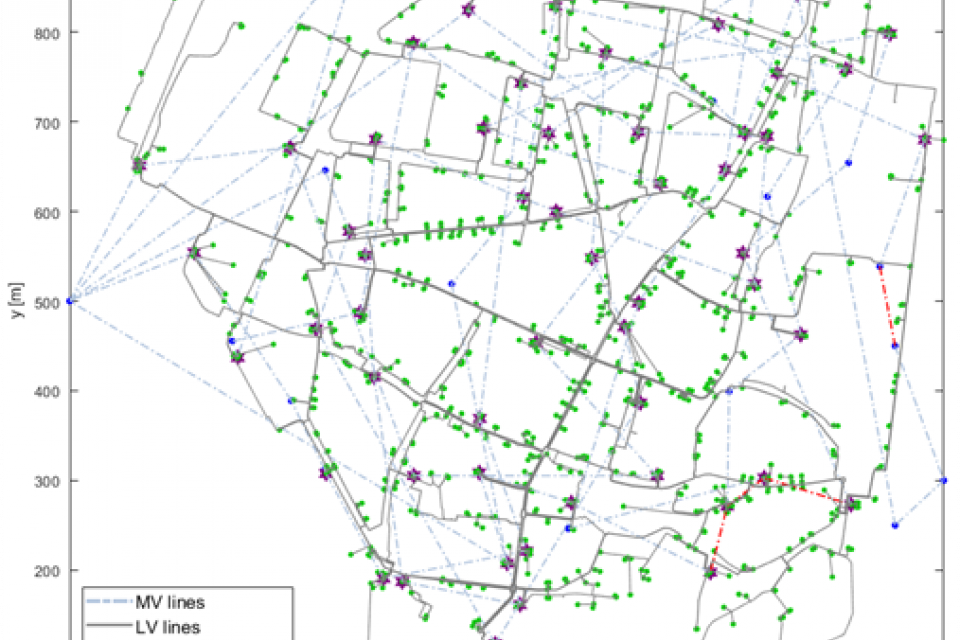Datasets
Standard Dataset
Meshed LV distribution network
- Citation Author(s):
- Submitted by:
- David Topolanek
- Last updated:
- Mon, 05/22/2023 - 09:23
- DOI:
- 10.21227/kssw-1457
- Data Format:
- Research Article Link:
- License:
 591 Views
591 Views- Categories:
- Keywords:
Abstract
The meshed network model represents an underground cable network placed in
the collectors of an old city centre. Furthermore, there are no DERs (e.g.,
photovoltaic or wind power plants) due to the limited space and historical
concept of the network. The network consists of 1 268 nodes, 1 498 lines and
79 MV/LV distribution transformers (DT) that are placed in 55 MV/LV
underground DT stations (one or two DTs in each DT station connected to LV
network). In the LV network, there are also 55 manually controlled bus
couplers (BC) placed at MV/LV DT stations or in some bigger switchgears. In
the European context, this network could be considered as one of the largest
meshed LV networks.The paper wich uses model of meshed network is focused on
the analysis of suitable optimization methods applied to large meshed
low-voltage networks. The introduced methods aim to minimize the SC-current
contribution by simultaneously fulfilling well-defined operational
constraints. The high number of binary variables (134) used in the worst case
to determine the possible network configurations generates 10^40 possible
solutions. For this reason, the paper focuses only on methods capable of
reducing the necessary steady-state calculations to a tractable size.
Depending on the case under study, the deterministic method turns to be
faster than the other ones at the price of reaching only a local minimum. In
contrast, if a longer computation time is tolerated, then evolutionary
algorithms succeed in finding the global optimum.
The model directly compatible with pandapower version 2.7.0.
Documentation of pandapower datastructure and elements is available on https://pandapower.readthedocs.io/en/develop/elements.html.
Nodes/buses: https://pandapower.readthedocs.io/en/develop/elements/bus.html
Lines: https://pandapower.readthedocs.io/en/develop/elements/line.html
Trafos: https://pandapower.readthedocs.io/en/develop/elements/trafo.html
Switches: https://pandapower.readthedocs.io/en/develop/elements/switch.html
Ext. grid: https://pandapower.readthedocs.io/en/develop/elements/ext_grid.html
Loads: https://pandapower.readthedocs.io/en/develop/elements/load.html
The line- and bus- geodata represent xy coordinates in metres relative to each other for purposes of visualizing of the results.
-----------------------------
Pandapower version 2.7.0
Date: 25/02/2022
Documentation
| Attachment | Size |
|---|---|
| 1.51 KB |







Comments
good